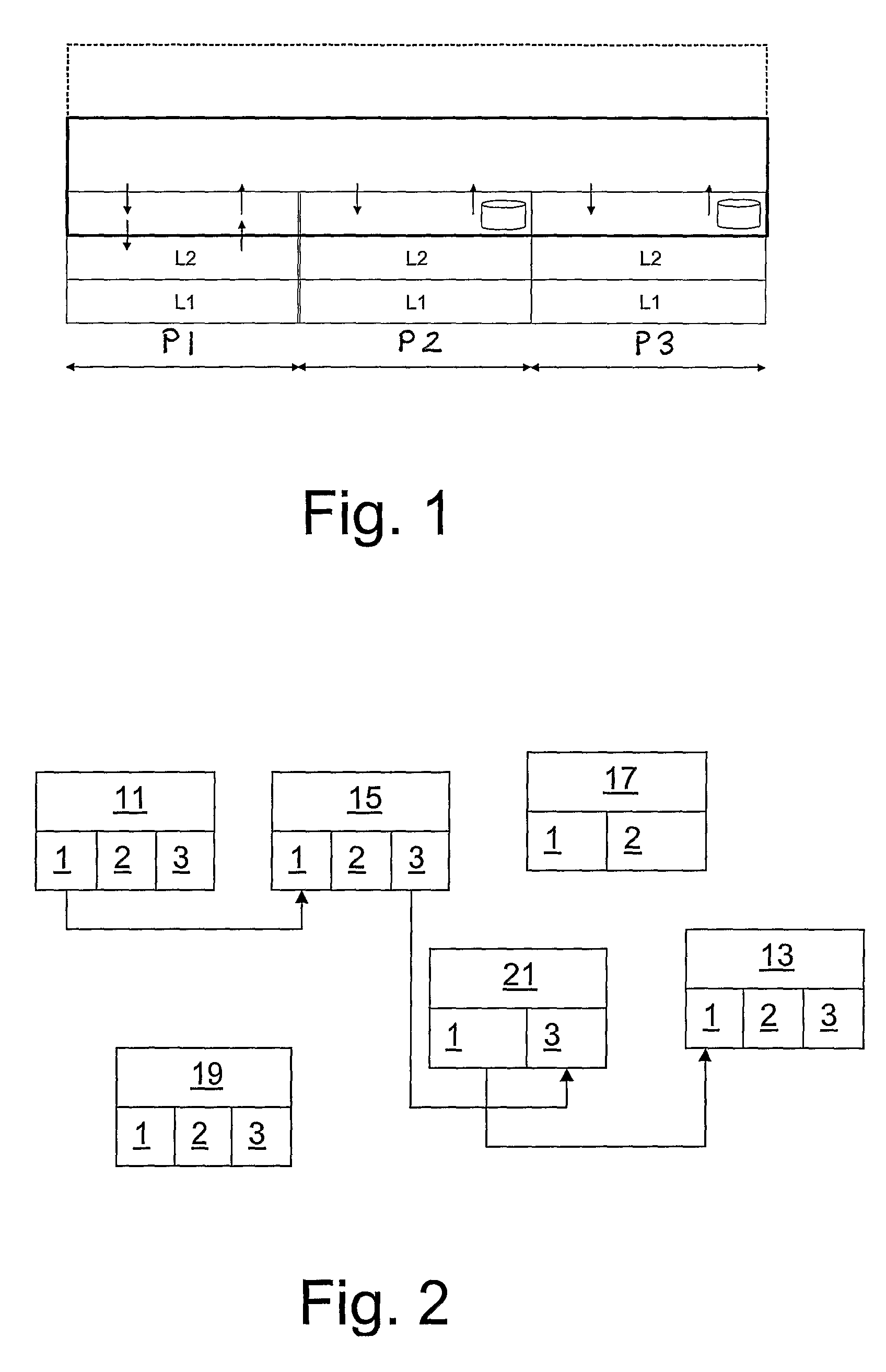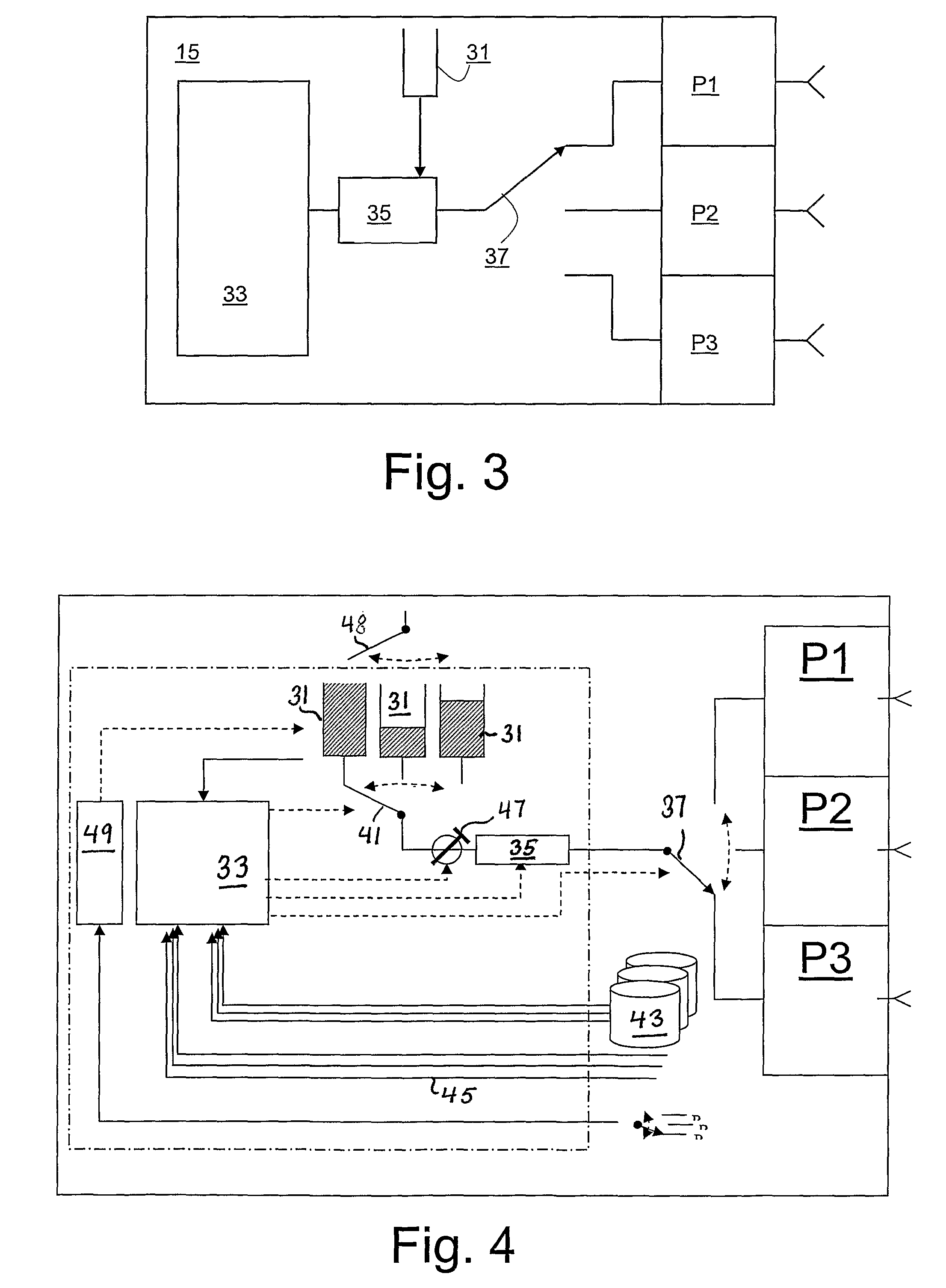Method and apparatus for routing packets
a packet routing and apparatus technology, applied in the field of method and apparatus for routing packets, can solve the problems of affecting the performance of the packet routing system, the queue conditions that can provide additional guidance in the forwarding decision are often not fully exploited, and the propagation conditions are exposed to time variations, so as to achieve efficient and appealing solutions, increase the degree of opportunistic freedom, and increase the performance
- Summary
- Abstract
- Description
- Claims
- Application Information
AI Technical Summary
Benefits of technology
Problems solved by technology
Method used
Image
Examples
Embodiment Construction
[0044]FIG. 1 illustrates an embodiment of a non-limiting node according to the invention. The node is able to handle three different access technologies P1, P2 and P3 Note that each access technology may also be composed of a set of protocols. Each access technology is schematically illustrated in FIG. 1 by a protocol stack comprising two layers, L1 and L2. Above the protocol stacks a forwarding layer comprising an algorithm according to an embodiment is placed, and above the forwarding layer, possibly other protocol layers are placed, which are not important from the point of view of the invention and will not be discussed here. Between the protocol stacks P1, P2, P3 and the forwarding layer a convergence layer is preferably found. The convergence layer comprises one part for each of the access technologies and is used to provide data to the forwarding layer regarding the available access technologies. The convergence layer may also be seen as an internal and entirely integrated pa...
PUM
 Login to View More
Login to View More Abstract
Description
Claims
Application Information
 Login to View More
Login to View More - R&D
- Intellectual Property
- Life Sciences
- Materials
- Tech Scout
- Unparalleled Data Quality
- Higher Quality Content
- 60% Fewer Hallucinations
Browse by: Latest US Patents, China's latest patents, Technical Efficacy Thesaurus, Application Domain, Technology Topic, Popular Technical Reports.
© 2025 PatSnap. All rights reserved.Legal|Privacy policy|Modern Slavery Act Transparency Statement|Sitemap|About US| Contact US: help@patsnap.com



